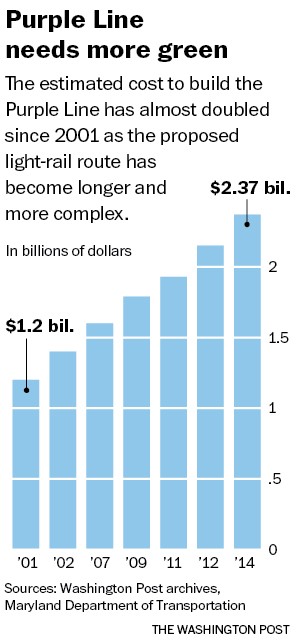Grandstanding–Not by Leggett–Begins at 1:04
Montgomery County Executive Ike Leggett is considering asking the County Council to pass a resolution urging the Washington Redskins to change their name. The D.C. City Council has already passed a resolution declaring it “racist and derogatory.”
County Council President George Leventhal thinks it’s a bad idea, as he explained in this response to a constituent who wrote him on the issue:
“Your comparison to the civil rights struggle is, I think, inapt,” Leventhal wrote back Nov. 8. “Those who were in a position to change the law and enact civil rights protections had the moral obligation to do so. The Montgomery County Council has no authority over the names of NFL teams. If we were to pass a resolution like the one that passed the D.C. Council earlier this week, its effect would be only hortatory and would be perceived by many as grandstanding.”
Where to begin?
Symbolism Matters
The Council and the County engage in many actions that are symbolic. In this case, the statement would be a powerful one not just because Montgomery is home to many Washington football fans but because Dan Snyder lives and grew up here. It would speak loudly that the elected representatives in his hometown believe that the moral and the right thing to do is to change the name.
Consider just one example of the importance of symbolic actions highlighted in a press release from the County Council: “recognition” of the start of Lunar New Year:
“I am delighted to be joining with my friends and leaders in the Asian American community to recognize Asian Lunar New Year,” said Council President George Leventhal. “Montgomery County’s diversity is its strength, and one of the best parts of my job is being able to share in these celebrations.”
The County Council passed legislation in 2006 making Lunar New Year a day of commemoration to recognize the significant contributions Asian Americans have made in the County. Approximately 14 percent of Montgomery County’s population is Asian American.
Too bad for Native Americans that they compose only 0.7 percent of Montgomery’s population.
Hortatory and Grandstanding
Let’s next get the obvious out of the way: George Leventhal is no stranger to hortatory and grandstanding. Infamously so. More than any other elected official in Montgomery, George is renowned for his bursts of temper, lecturing and posturing in public and private. The clip above from the Washington Post is one example (see George unable to help himself starting at 1:04).
Whether it is what allows him to accomplish his goals or impedes him from being as effective or successful as he might like, many people in the County have seen or experienced it. Indeed, as in the above example, it often elides into bullying from exhortation or grandstanding.
Has George Leventhal Ever Met Ike Leggett?
For those of you less familiar with Montgomery County Executive Ike Leggett, who recently began his third term, allow me to explain that most of his speeches and actions are political oatmeal: reasonably satisfying and nothing that upsets the stomach.
While he has often been called highly cautious and prudent–and criticized at times for being overly so–I have never heard anyone ever describe the County Executive’s actions as “hortatory” or “grandstanding.” I heard him once get mildly exercised about Maintenance of Effort for a minute at a Committee for Montgomery breakfast but the moment passed.
Let me suggest that this is not accidental.
Notwithstanding the election of President Barack Obama, the election of African Americans from jurisdictions that do not have either a black majority or a combined black and Latino majority remains relatively rare. (If you go on researchgate.net, you can find some of my own publications on the topic.)
Unfortunately, the same actions that might be labelled as passionate or firm leadership by a white politicians have sometimes been stereotyped as angry and hostile when done by a black politician. Disciplined, successful African-American politicians who achieve high levels of non-black support tend to stay away from actions that could be perceived as hectoring or confrontational.
As a result, no one has ever confused Ike Leggett with H. Rap Brown. The payoff has been high: Ike Leggett is not just the County’s first African-American County Executive. He is one of Montgomery’s most successful politicians ever. Full stop. But no one views him as “hortatory” or “grandstanding.”
There is a reason that the Post has never run a clip of Ike like the one of George. It doesn’t exist.

